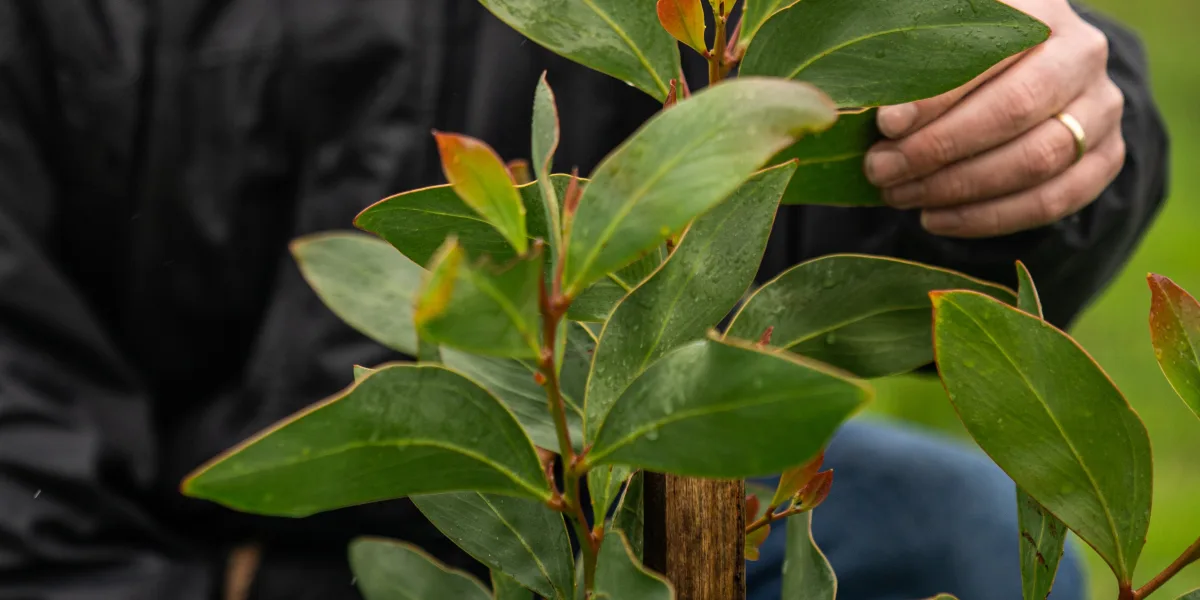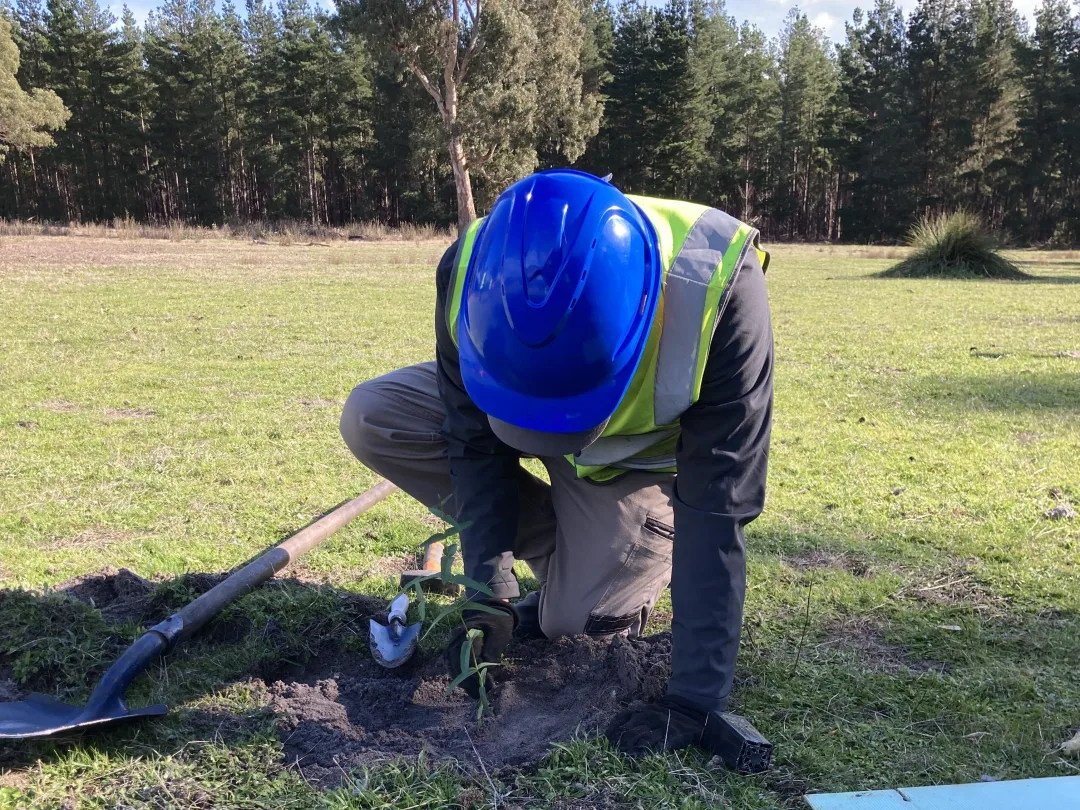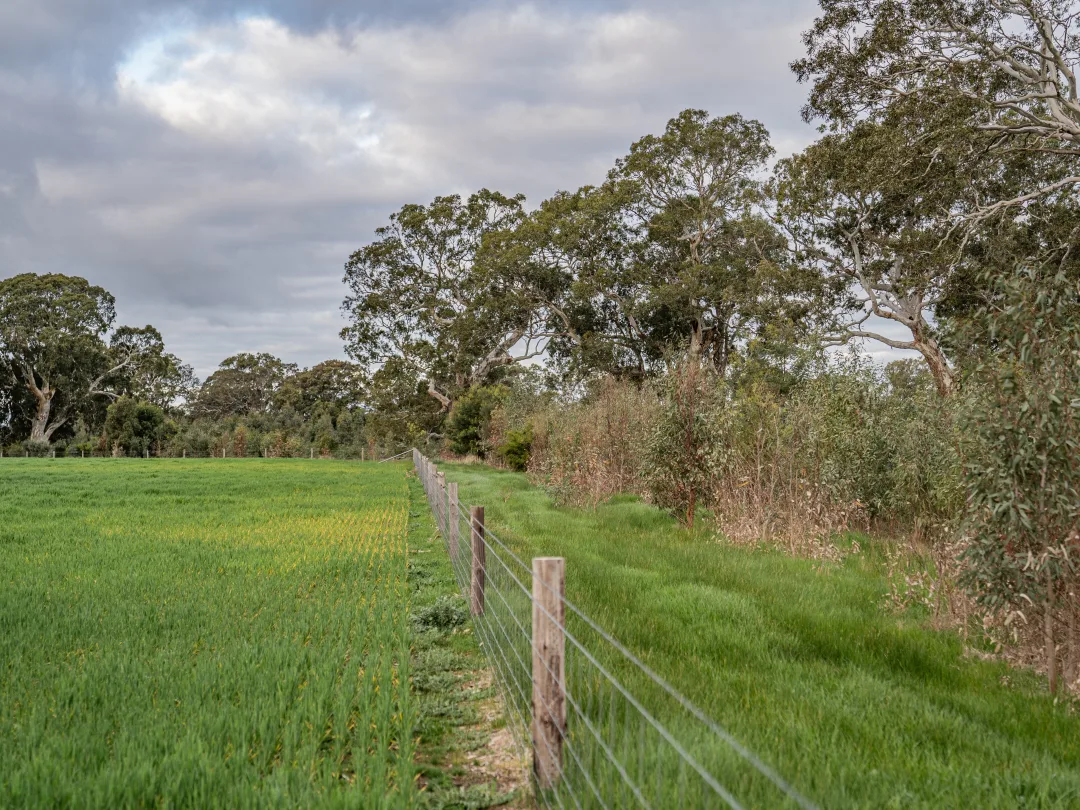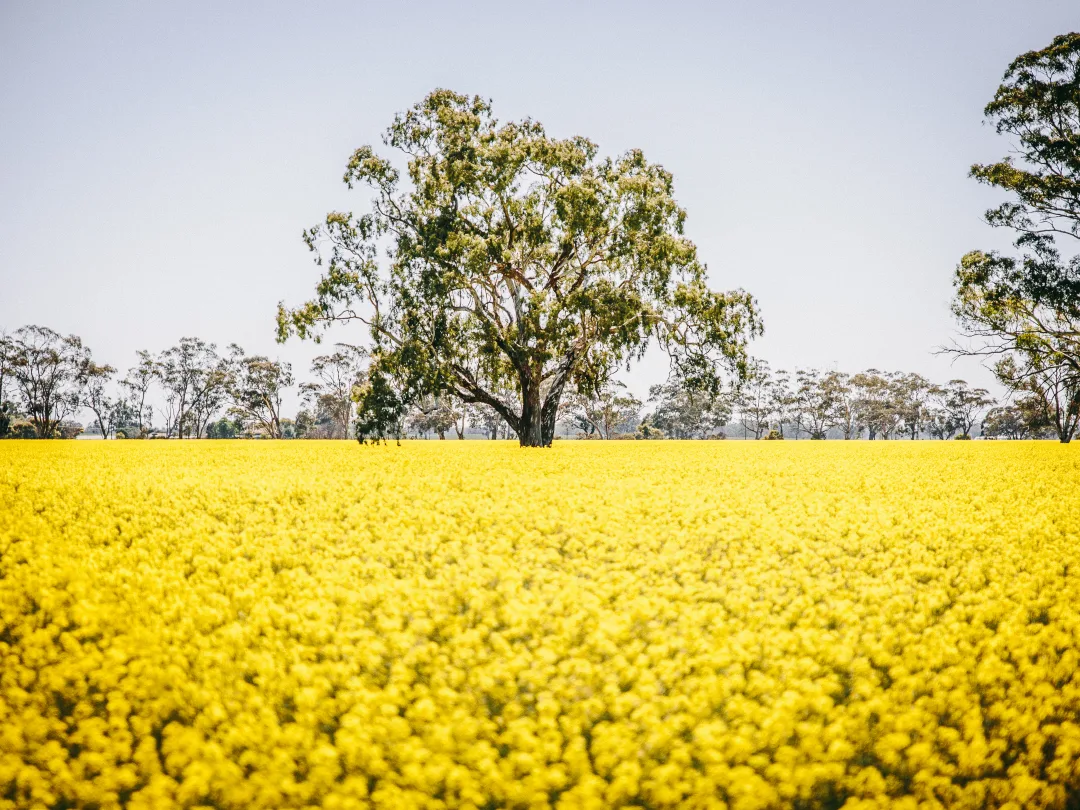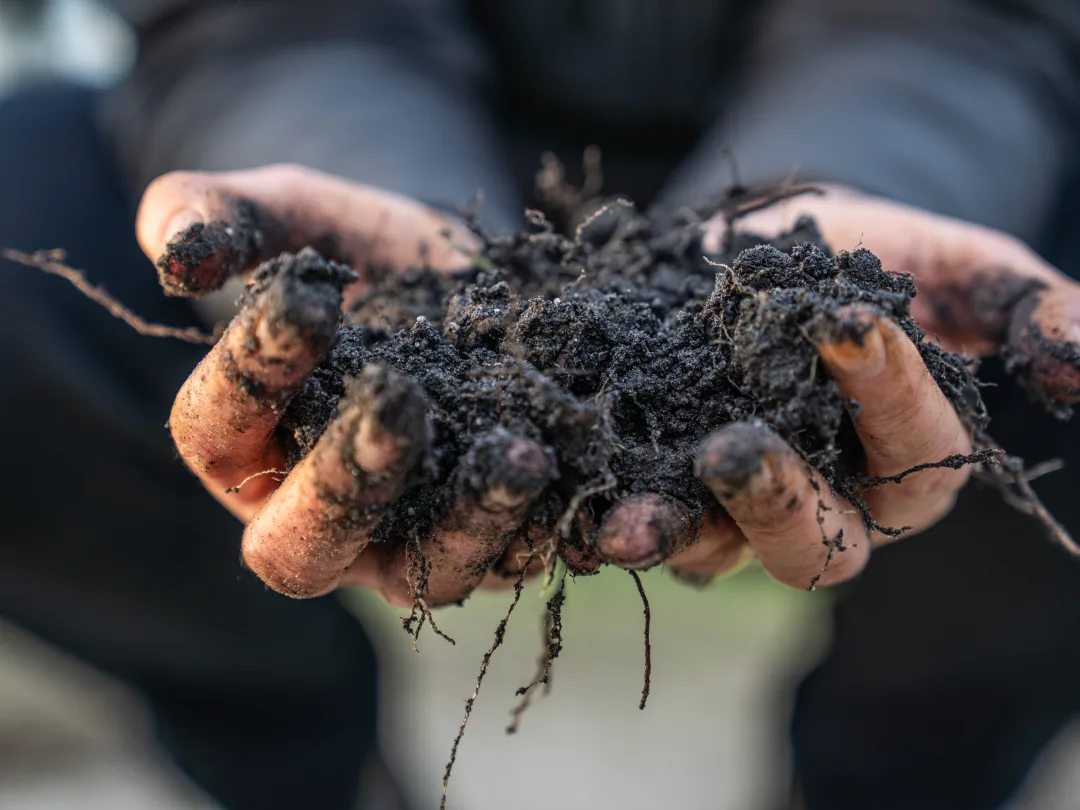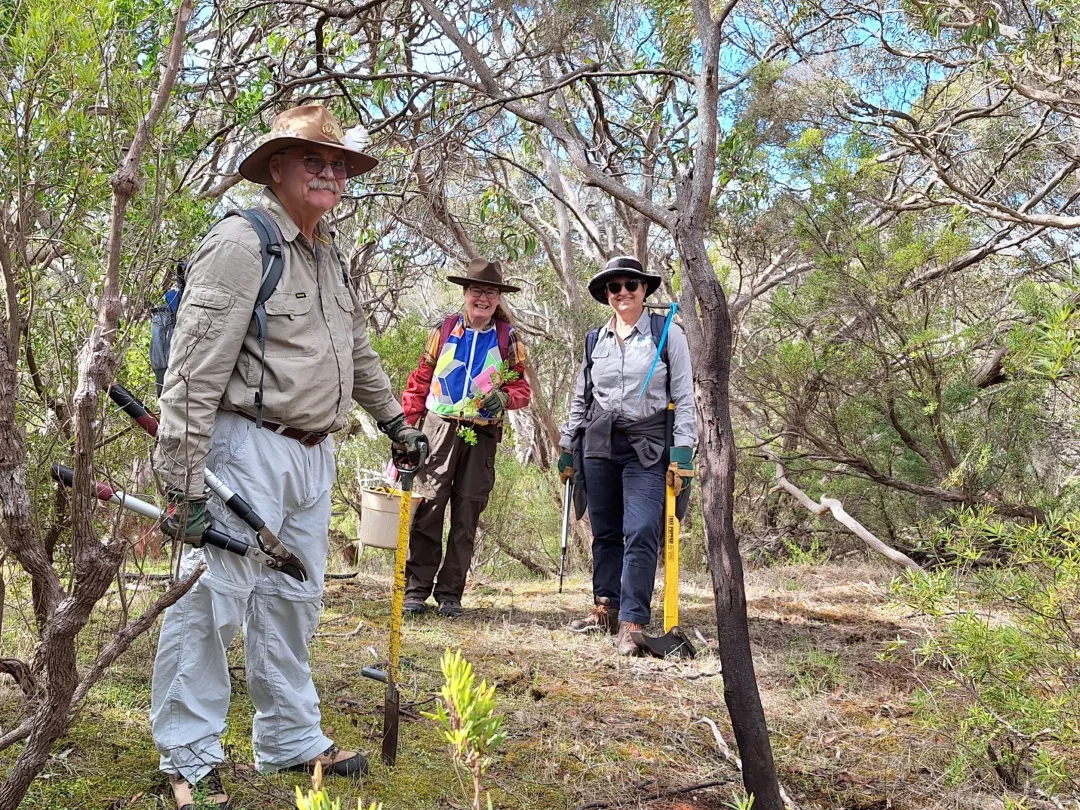Access local knowledge
The Limestone Coast Landscape Board's Bush Management Advisor has local knowledge and can provide free advice on:
- Protecting existing native vegetation on your property.
- Planning the establishment of a native vegetation patch on your property.
Contact our Bush Management Advisor today
The benefits of native vegetation on your property
Native vegetation can reduce moisture loss around crops by acting as a wind break. Deep rooted perennial species can reduce the impacts of salinity from a rising water table. Native vegetation may also address land degradation issues such as erosion.
Native vegetation preserved as scrub blocks and corridors, shelterbelts and paddock trees also provide critical habitat for wildlife. This includes pollinators that can assist with pollination and pest control services.
Undertaking your own revegetation
Planning is key to making your revegetation successful. Start planning early as some steps need to occur well before you put your plants in the ground.
Below is some guidance to help you make your revegetation project a success.
Selecting a site for revegetation
When selecting a site for revegetation, consider the site conditions and purpose of the revegetation. The size, shape and location of revegetation will impact planning. You should also consider the site in terms of ongoing management.
Preparing your site
It is recommended that you knock down pasture grass 12 – 18 months before planting, and again pre-planting.
Soil is best prepared by either ripping, mounding and/or creating planting wells. If you identify that the ground needs ripping, undertake this task six months before planting/seeding.
Disturbed soil provides perfect conditions for weeds to germinate and thrive. You should continue to undertake weed control in preparation for planting.
Ordering your plants and guards
Order your plants or seed, or collect seed, by the September of the year before you intend to plant to allow for quality control for success. There are a range of nurseries and growers who supply native plants that are local to your region. You can also source seed from local vegetation and germinate and grow the seedlings yourself or use a professional. You can grow seedlings on as tubestock, or direct sow on the property.
Order your tree guards. Your choice of tree guard will be based on its purpose and ongoing management. Generally, a biodegradable cardboard tube will suffice.
Planting your native plants
The best time for planting your tubestock is when the soil is moist but not overly wet. Often in the Limestone Coast this is in June to July. In heavier soils or high rainfall areas, it may be August to September. You will need to support newly planted seedlings. You will need to maintain moisture, minimise grazing and avoid the seedlings being overgrown with weeds. You can create planting wells, use tree guards and apply timely weed control to improve survival.
Direct seeding closely mimics nature. It can enable fast vegetation establishment over large areas and is cheaper than tubestock. Undertaking seeding before spring is ideal. You should follow up with weed, pest insect and animal control and exclude livestock from the area.
If it suits you, you can organise a planting team which may be beneficial to spread the load.
Install stock proof fencing, and plant five metres from any fencing to stop fallen branches damaging the fence.
Controlling pests and grazing pressure
Grazing pressures come from many sources. Timely control of red-legged earth mites, snails, rabbits, deer, kangaroos, corellas and stock is essential. Control methods such as spraying, baiting, shooting, tree guarding and fencing will give seedlings the best chance of surviving and thriving. Please note you must get a destruction permit from the Department for Environment and Water to control over abundant native animals such as kangaroos and corellas.
Weeds also negatively impact seedling growth. Ongoing weed control, but particularly winter/spring weed spraying will allow seedlings to thrive.
Managing your native vegetation at years two, three and five
As time goes on, you will need less hands-on management of your native vegetation. In the meantime, years two and three will be critical to success.
It will be important that you maintain plant records for species survival. This will inform future native vegetation plantings and make planning and preparation easier. You should also decide if you need to replant certain species if the survival rate is low. At year five, you should consider if your native vegetation needs thinning.
Conserving vegetation
You may be interested in conserving an area of native vegetation on your property in the Limestone Coast now and for future generations.
Find out more about Native Vegetation Heritage Agreements today
Clearing existing native vegetation requires approval
There may be occasions where you consider clearing of native vegetation unavoidable. This might be for safety reasons or due to infrastructure changes. Clearing native vegetation on your farm should always be considered the last option.
Clearing native vegetation in South Australia requires approval. The Department for Environment and Water is responsible for providing approval to clear native vegetation.
Find out more about clearing native vegetation
